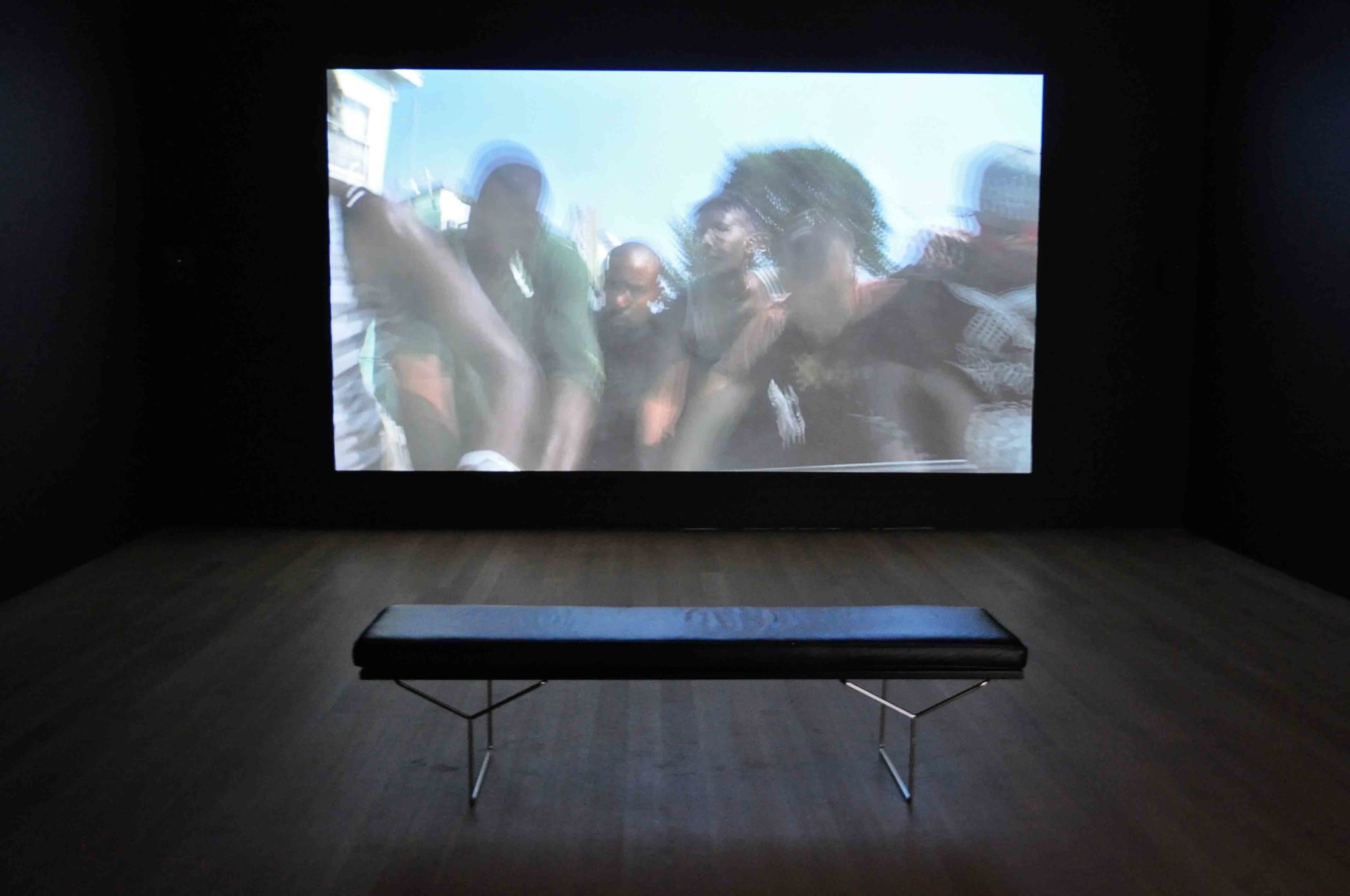
In a dark room on the fourth floor of the Yale University Art Gallery, a projected video shows a black man in a rusty, beat-up Volvo. Part of Jefferson Pinder’s exhibition “Lazarus,” the short film by the same name begins with quick, jumpy shots detailing the crumbling piece of machinery — its dented bumper and peeling teal paint. Inside the car, the pensive-looking man wears a gray tweed suit and a shining watch. The car won’t start.
So he gets out and begins pushing.
Pinder is known for his multimedia work that focuses heavily on American history and social issues. As the organizer of the installation, Judy Ditner writes his “surreal performances invoke themes of Afrofuturism, a social, political and cultural genre that combines science fiction, magical realism and Afrocentrism to address the black American experience.”
Over the course of the video, which is mainly rooted in reality, elements of this fantasy begin to come through. As the man in the car keeps pushing, several other people of color come to join him in his effort. A man wearing a Retired Marine Corps baseball cap is the first to help, followed by a woman who is walking down the street carrying her groceries; she sets aside her bag to help. Soon, a horde of people drop everything they’re doing to help push the Volvo, with its bent Maryland license plate. A man walks out of his house, throws his Coke can on the ground, and runs toward the car to begin pushing. Even a teenager on a skateboard lets it roll away as he gets off to go help the crowd propelling the car forward.
After several minutes of this montage, in which strangers and passersby seem mysteriously and utterly compelled to help propel the car forward, the crowd is so great that not everyone is directly pushing. Now, some people have their hands on others’ backs as they run after the car. Everyone is touching, looking solemn. There are shots of sweating faces and tired, running feet all working together en masse. Soon, they get enough momentum to push the car forward, and slowly the crowd lets go.
The man inside the car, in the gray suit, is shown in a few slow-motion frames, saying something that the audience cannot hear. Instead, the song Jin-Go-Lo-Ba (Drums of Passion) by Babatunde Olatunji plays loudly.
At the end, the man in the car is back to where he started. In the exact same spot.
While the driver cannot be heard saying anything, Pinder certainly does communicate something important. As noted in the film’s description, “physical tasks [serve] as an abstract metaphor for social struggle, [and Pinder] explores notions of community and the limits on social economic mobility. The subjects in his videos do not speak, but their actions resonate with the frustrations of everyday life.”
In the Gospel of John, Lazarus is brought back to life after his death by a miracle of Jesus. This miracle, often referred to as the resurrection of Lazarus or the raising of Lazarus, mirrors the way the man in the car was raised by a conglomeration of people. Yet, at the end, the raising did not seem to perform any miracle. He was back to where he began, in the same desolate car on the side of the road. While appearing to have been mobile for a few short moments, the effort of the man and his helpers was not enough to transgress the boundaries of social and political constraints.
Allison Primak | allison.primak@yale.edu .







